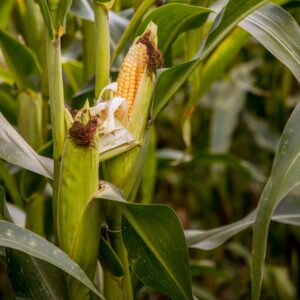
Sources: Southern African Essential Oil Producers Association (SAEOPA) and www.naturalnutrition.co.za
Africa’s low per capita incomes, especially among rural populations, are directly linked to the problems of poverty and hunger. Thus, agriculture is – or could be – a critical engine of economic growth. However, small-scale producers in mainstream agriculture face multiple barriers: declining prices for traditional crops, lack of access to capital, transport, market access, and the market dominance of large commercial enterprises, among others.
Alternative crops, in the form of natural plants, are far better suited to the creation of viable agribusinesses in rural communities. First, indigenous African plants occur naturally and so are relatively easy to cultivate commercially. Second, natural plant production is labour intensive rather than capital intensive, and so minimises capital investment while at the same time maximising job-creation potential. Third, African communities have extensive knowledge of indigenous plants, creating a natural competitive advantage in this sector.
Favourable market conditions in the natural plant products sector also support the involvement of small-scale suppliers. The global nutraceutical market alone is estimated to be worth $60 billion annually in sales of dietary and meal supplements, as well as specialty products. There is also increasing demand for organic and natural products such as herbal teas, essential oils, herbs and spices, phytomedicines and phytocosmetics. This growth has been supported by a global swing away from synthetic products to those that are natural, healthy, sustainably produced and fairly traded.
Africa has only just started to tap the virtually unlimited economic potential of its natural botanical heritage. To reap the full benefit, much more has to be done to commercialise crops, to increase value-addition on African soil, and to capitalise on new market development opportunities. To introduce these crops into the main market stream will be a major challenge, but can be done with support, training and funding.
Source: ASNAPP and SAEOPA
See if the annual, highly useful Herb and Spice Market Value Chain Profile and Essential Oils Market Value Chain Profile on the Directorate Marketing pages at www.dalrrd.gov.za have been updated. Also visit websites of role players like the Southern African Essential Oil Producers Association (SAEOPA) (details below).
Further reference:
Also see this heading on the “Essential oils” page.
ARC-TSC publications:
Contact them at Tel: 013 753 7000/81 or email infoitsc [at] arc.agric.za.
ARC-Vegetable and Ornamental Plant (ARC-VOP) provides publications relevant to the “herbs and spices” category e.g. The cultivation of parsley, The cultivation of culinary herbs in South Africa, Production of coriander in South Africa etc. Contact them at 012 841 9611.
Call 012 842 4017 or email iaeinfo [at] arc.agric.za for the following publications, available from the ARC-Agricultural Engineering:
A number of publications are available at the “Old website” option at www.dalrrd.gov.za. On the Directorate: Marketing web pages find the latest annual Herb and Spice Market Value Chain Profile and Industrial Products: Essential Oils Market Value Chain Profile.
Taking the Publications option will bring you to the many notes for growers. These include: